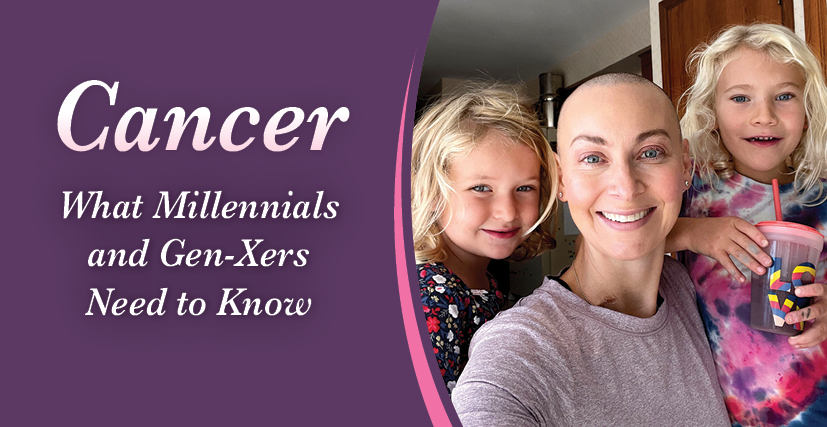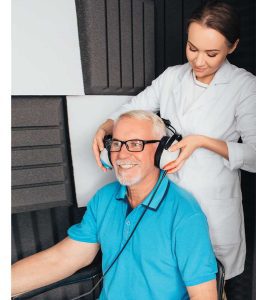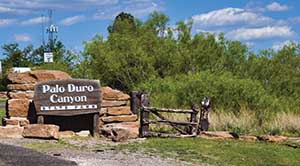By Amy Talcott
There’s probably no other six-letter word that strikes more fear and uncertainty in someone than the word “cancer.” Unfortunately, that word is being heard more frequently by individuals under 50—more specifically, those in their 30s and 40s.
For 38-year-old Kelsey, an afternoon playing with her children resulted in a diagnosis of breast cancer. “I was on the trampoline with my kids one afternoon,” explained Kelsey. “When my daughter jumped on me, I felt an unusual pain in my breast.” Kelsey had no apparent risk factors and had not yet reached the recommended age of 40 for screening mammograms, but had her annual gynecologic appointment scheduled for the following week. “I told my doctor about the breast pain, and we discovered through a mammogram that I had very dense breast tissue, which can make it harder to detect a problem,” she said. A breast ultrasound uncovered a suspicious lump, and a biopsy confirmed it was cancerous.
While she has undergone six months of chemotherapy and will have surgery for a double mastectomy, Kelsey counts herself as one of the lucky ones. “My daughter basically saved my life,” she said. “As an otherwise healthy female, I don’t know how long I would have gone before being diagnosed.”
Kendra, a healthy 40-year-year old, began experiencing gastrointestinal issues over a year ago. “After having mild symptoms for months, I had a colonoscopy where a mass was found in my rectum,” she explained. “It was biopsied and determined to be precancerous, meaning it would likely turn into cancer. I was surprised because I’ve never had any major health issues—I exercise and eat a mostly plant-based diet.” Kendra underwent surgery to remove the mass, and because it was discovered so early, her prognosis is good, though she’ll be monitored closely for the next few years.
Cancer is a disease that has historically affected older adults. According to the National Cancer Institute, 77 percent of cancers are diagnosed in individuals ages 55 and older, and the average age of a patient diagnosed with cancer is 66. So why does it seem that cancer diagnoses are trending younger?
The Evolution of Lifestyle
A study by researchers from Brigham and Women’s Hospital, published in the October 2022 Nature Reviews Clinical Oncology, reveals that the incidence of early onset cancers—defined as cancers diagnosed in adults under 50 years of age and including those of the breast, colon, esophagus, kidney, liver, and pancreas—has dramatically increased around the world, with the rise beginning around 1990. This cohort effect, as it’s called, means the risk of these cancers has increased for each successive group born at a later time; for instance, those born in the 1990s have a higher risk of developing early-onset cancer in their lifetime than those born in the 1980s.
While these statistics are fact, the reasons behind them are less cut and dried, says Dr. Matilde Francois, a general surgeon specializing in breast cancer at Carle Cancer Institute Normal.
“In the case of breast cancer, we have noticed a steady increase in diagnoses in women under the age of 45 over the past three decades, and we don’t quite know exactly what’s causing it,” said Dr. Francois. “Something like a genetic shift takes centuries to come up, so when we see a shift in short order, we’re most likely looking at societal change.”
That seems to be where the consensus is headed. The team involved in the Brigham study found that the early life “exposome,” which encompasses an individual’s diet, lifestyle, weight, environmental exposures, and microbiome (good and bad bacteria), has changed substantially over the last several decades. They hypothesize that factors like the Western diet and lifestyle may be contributing to the rise in early onset cancer. In fact, the human microbiome is being studied as a factor in the increase in colorectal cancers, especially in younger adults. A recent report by the American Cancer Society (ACS) indicated that the rate of new colorectal cases among Americans younger than 55 years increased from 11 percent of all cases in 1995 to 20 percent in 2019.
The team also acknowledged that this increased incidence of certain cancer types is, in part, due to early detection through cancer screening programs, but it’s unlikely the only reason. Other possible risk factors for early onset cancer can include alcohol consumption, sleep deprivation, smoking, sedentary lifestyles, and eating highly processed foods—all of which have increased since the 1950s.
Dr. Bhanu Vakkalanka, a medical oncologist at Carle Cancer Institute Normal, said that significant transformations in how we lead our lives could indeed be a factor. “We are all working harder and longer, which affects both our nutrition and our sleep. Processed food is more readily available and we have less time to prepare fresh meals. The globalization of our work means our hours have changed—it’s not uncommon for people to communicate with each other in the middle of the night, disrupting sleep. And I really believe that all these factors could be disrupting our body chemistry and contributing to the increased incidence in these younger onset cancers.”
However, while lifestyles may have changed, even those in their 30s and 40s who strive to eat right, exercise, and maintain healthy lifestyles are finding they are not immune to the disease.
Emily was shocked to receive a diagnosis of Stage 3 rectal cancer at the age of 35. “I have no family history, I was young and healthy and never had any red flags in routine bloodwork. But I was seeing blood in my stool, so they ordered a colonoscopy. After finding the tumor, they said it had likely been growing for about five years.”
“These days, we are realizing that in some cases there are really no attributable factors for some cancers,” said Dr. Vakkalanka. “Twenty years ago, if somebody came in at the age of 35 or 38 and had colon cancer, almost always the assumption was that there was something hereditary or genetic. Twenty or 30 years from now, though, I’m fairly certain we will see some genetic evolutions, but they’re probably not necessarily inherited.”
“The fact is, the vast majority of people don’t have a lot of risk factors,” said Dr. Francois. “In the case of breast cancer, the number one risk factor is that you have a pair of breasts. Baseline just walking around people in the general population have anywhere between an eight to 10 percent risk of developing breast cancer just by having them alone.”
Can Cancer Be Prevented?
The million-dollar question is: can we do anything to help prevent cancer? The answer isn’t simple, says Dr. Vakkalanka. “There are preventive strategies individuals can implement to lower their risk, such as stopping smoking, maintaining a healthy weight, and exercising, but of course, that’s no guarantee.”
Once cancer shows up in the body, especially if it’s caught in an earlier stage, doctors may recommend treatments including chemotherapy and radiation, which can target the cancerous cells as well as any non-cancerous lesions that have the potential to evolve into cancer.
But other than chemotherapy and radiation, there aren’t currently a lot of medical risk-reduction strategies. One of the few cancers to have such a strategy is breast cancer. “In the case of breast cancer, hormonal therapy can be used not only to help prevent a recurrence but to reduce the risk of developing cancer in the first place for higher-risk patients,” said Dr. Francois. Because some types of cancer depend on hormones to grow, hormone therapy can be used to prevent the body from making a hormone, change how a hormone acts in the body, or block a hormone from binding to cancer cells. Hormone therapy can also be used as a treatment and risk-reduction strategy for prostate cancer.
Unfortunately, prevention strategies like hormone therapy have not been well proven as effective in preventing other types of cancers; for example, colorectal cancer, lung cancer, and hormone receptor negative breast cancers, says Dr. Vakkalanka. “While there are multiple types of interventions to help prevent a recurrence, hormonal prevention strategies are not available or effective for these cancers at this point in time.”
Screenings
Just four types of cancer—breast, cervical, colorectal, and lung—have a screening test recommended by the United States Preventive Services Task Force (USPSTF). “Cancer treatments have vastly improved over the last few decades, but the health system’s ability to screen for cancer, which is essential for early diagnosis and effective treatment, still has a long way to go,” said Caroline Pearson, senior vice president at NORC at the University of Chicago. “There need to be more screening options to catch more cancers and improve outcomes for patients.”
For some of the existing screenings, changes are being made. “The USPSTF recently recommended that screening for colon cancers, which traditionally have started at the age of around 50, should be brought down to the age of 45,” said Dr. Vakkalanka. “And I think similar interventions may also eventually have to be put in place for other cancers.”
Screening mammograms are recommended for women of average risk of breast cancer beginning at age 40, but with risk factors becoming less obvious, Dr. Francois recommends women look into the IBIS tool, also known as the Tyrer-Cuzick model; a questionnaire that can help assess a person’s risk of developing breast cancer. “It’s not routinely done by all practitioners, but it’s something to ask about, especially if you’re under 40.”
In addition, the Food and Drug Administration (FDA) recently updated regulations requiring mammography facilities to notify patients about the density of their breasts, since dense tissue can make it harder to detect cancer in mammograms. The new changes require facilities to provide patients with information about their breast density and include specific language in the mammogram reports to explain how breast density can influence the accuracy of a mammogram. Additionally, the FDA is requiring that facilities recommend patients with dense breasts talk to their healthcare provider about breast density, risks for breast cancer, and their individual situation.
The More You Know
While physicians and researchers continue to find ways to prevent, treat, and cure cancer, there are steps you can take to reduce your risk, including eating right, staying active, and not smoking. It’s also important for individuals to follow the recommended screening guidelines for certain cancers, which can be found on the American Cancer Society’s website.
In addition, the ACS advises individuals to stay alert for symptoms they may experience that are out of the ordinary, which can include changes in bowel or bladder habits, thickening or lump in the breast or elsewhere, nagging cough or hoarseness, unusual bleeding, or a sore that won’t heal. While most of these are caused by nonmalignant disorders, they’re reminders to listen to your body and report symptoms to your primary care physician.
“The more you know about your own health, your risk factors, and the types of screenings available to you, the more you can advocate for yourself,” said Dr. Francois. “On our end, continuing to educate our patients and the public about risk factors, screenings, preventative strategies, and treatment options, as well as continuing to research causes and cures, will only lead to improved outcomes and longer, healthier lives.”










